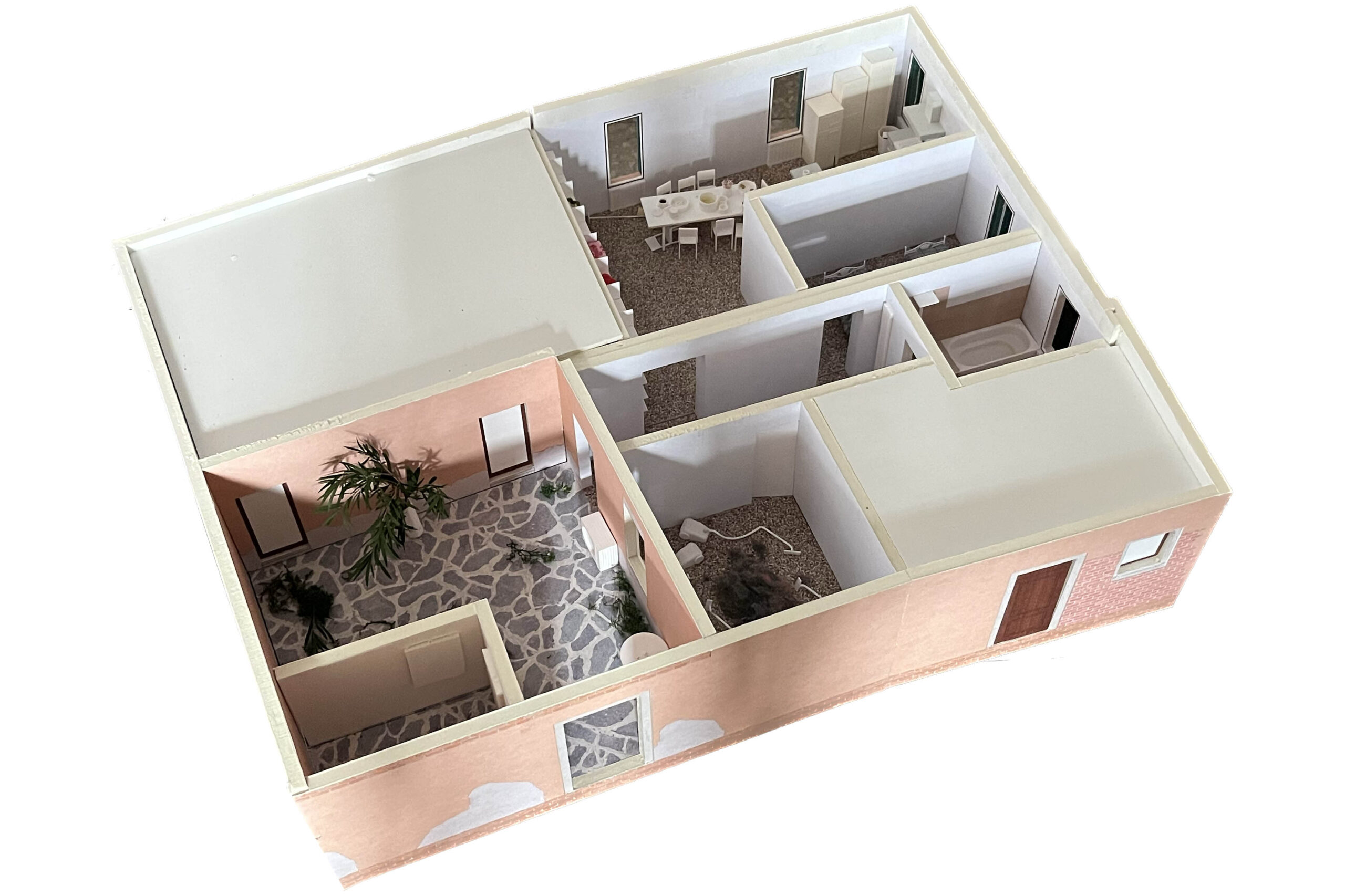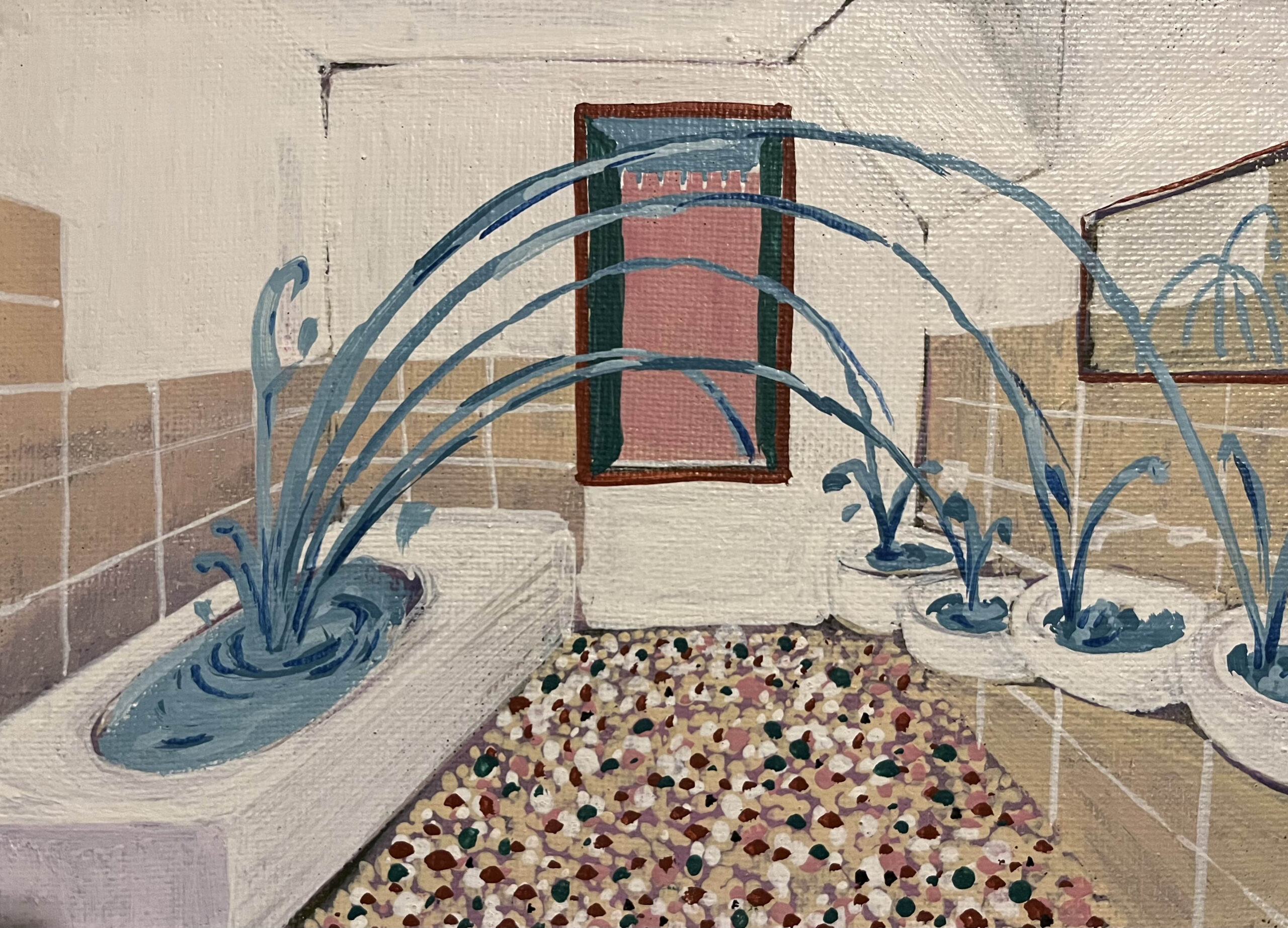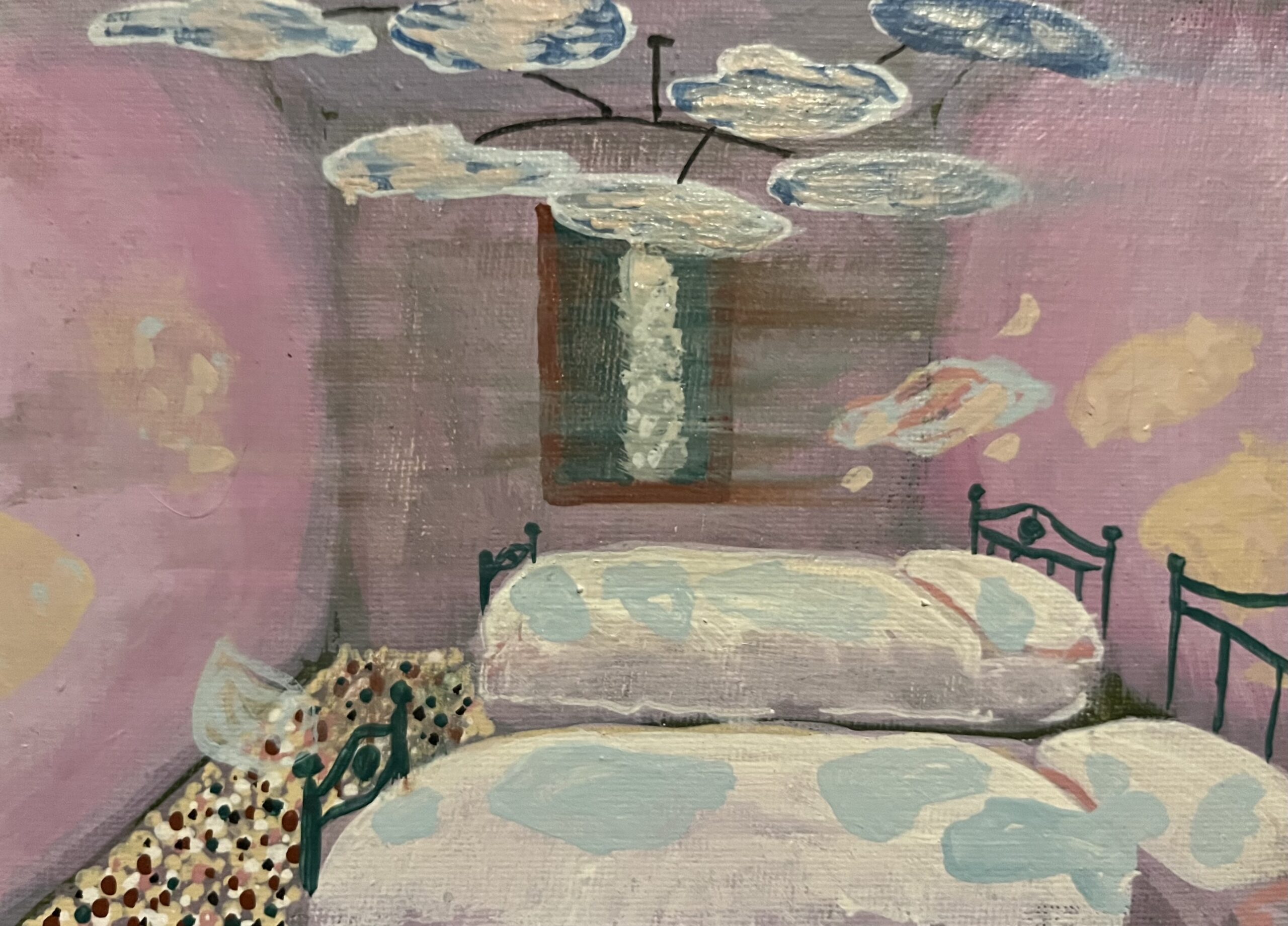
At this year’s Architecture Biennale in Venice, an attentive visitor notices a poster with a friendly face just a few steps from the Arsenale, inviting people to enter the building. This is Home Stage, the Estonian exhibition which explores the contradiction between the living place as a home and its exchange value. For the duration of the biennale, a set of performers will live in a rental apartment, allowing guests to be part of the ongoing durational performance.
I sat down with curators of the exhibition Aet Ader, Arvi Anderson and Mari Möldre from b210 Architects a few weeks after the opening of the Pavilion. Their biggest dream is to transform into a spider on the wall of the Venice apartment to see incognito how the performers work with the audience and how the mildly conservative visitor to the architecture biennale reacts. They tell me that architects are not often used to encountering bodies in space. More often they rather imagine a clean space – an actual human being in the room could ruin the apartment, stain the tablecloth, mess up the bed. Sometimes 3D renderings of people are shown in project visuals but when the object is ready, they hand it over and usually never see how people actually use it. But a home is never just architecture – it is a combination of our bodies in the most private and indoors environment, speculations on the real estate market, and the unnoticeably powerful moves of the dominant ideology.
Kaarin Kivirähk: I would like to ask about the connections between home and architectural theory. How much is the term home discussed in current conversations in the architecture scene?
Aet Ader: Not so much. Home is seen more as belonging to the realm of housing politics. Home is a projection of the ideals in a society. If we look at new housing developments, we can see how the typical solution, projecting the ideal in society, is being sold to people. But why couldn't this model be more varied? It is always the same old story for the new blocks of houses.
Mari Möldre: The houses are built on demand and have the face of a free market economy. Architects themselves are not usually the commissioners nor the developers, so they are free to work as they wish as long as they don't get in the way of making a profit. Housing units are constructed by commission and essentially, they are interchangeable, so they can be sold and exchanged on the market easily. When speaking about living spaces, people tend to go to extremes: a home is either a holy sanctuary and an intimate place to be by yourself or a piece of real estate, an object of speculation and profit. Navigating between these opposites, we invited writer Jan Kaus and performance artists Liisa Saaremäel and Keithy Kuuspu to approach this topic in a more symbolic way in the Pavilion.
Arvi Anderson: A certain lifestyle is being sold to people but if you want to live in a different way or in a different space, you don’t really have much choice. It is not profitable to build these homes and construction work is also quite standardised. Home is always a political idea. When you think of the homes that have been built in Estonia, you can always see how political decisions have shaped them. The best example is the Soviet tower blocks, where most Estonian people live and this environment still affects our patterns of thought.

What are the particularities of East European homes? Or how would you describe the relationship with home as an architectural idea in our region?
Arvi: Our region is characterised by the change of ownership relations in the early 1990s. Private ownership was established again after the end of the Soviet power, and the properties taken away during the occupation period were returned to their previous owners. Because of these processes, there have been many different owners of homes in Estonia, although now we are becoming more similar to Western Europe, in the sense that for the next generations purchasing a home will be economically more complicated than before.
Aet: The processes involved in privatisation and returning properties have been conducted slightly differently in different Eastern European countries. For instance, in Poland the system implied that the property and the land below it had different owners, so the land was returned to the pre-war owner and the post-war building was returned to the later inhabitants. In Estonia, these processes were carried out as quickly as possible, and wasn’t always done with full transparency, thinking of it now. In the abovementioned Polish case these processes took 30 years. Despite the differences, the former Eastern Bloc has to face the common question of what to do with the residential tower blocks, planned and built in the Soviet era. Large parts of today's living spaces in our region are located in these districts and the buildings have depreciated physically as well as in terms of the lifestyle they suggest and promote. How to make these districts more contemporary is definitely a challenge all across Eastern Europe.
Mari: The 1990s also brought the desire to own a private home. This came as a response to the Soviet era communal living.
Aet: People started ideologically opposing any type of communal living. By the way, before the Second World War, the situation was more varied. During the first period of Estonian independence between 1918 and 1940 there were numerous communal living projects, such as different cooperatives. By today, we have shifted towards a very individualistic attitude.
Arvi: People have the feeling that the economy is free and regulation of any kind is despised. But in reality, the economy is not so free at all and if we start thinking about apartments or houses as just commodities without any regulations, problems start to crop up. In Estonia, cities and towns don't own much land, so they can't build too many municipal buildings themselves. Real estate is increasingly owned by Finnish and Swedish retirement funds that buy the property for investment only.
Mari: In sync with global trends, the living spaces in Estonia have become objects of investment and speculation. Apartments are being built and bought as investments, the idea of living there has become secondary. Apartments increasingly look the same, an IKEA home can make you feel at home in every corner of the world but at the same time, it is a kind of strange hotel-like homeliness.
The title of this year’s Biennale is Laboratory of the Future. What could the role of the home be in the future? What will our future homes be like?
Mari: Last year a young architect, Merilin Kaup, defended her Master's thesis at the Estonian Academy of Art, titled Practical Utopias, where she described home as an archipelago, consisting of rooms spread around in the city. I personally would like it if there would be more variability to choose from, this would hopefully make homes more affordable for people, so that me and my generation could also afford one. Right now, the selection of buildings is more or less the same. At the same time, there are enough buildings and I think that in the future, reconstruction and reusing existing buildings will become more prevalent.
Aet: In addition to varied living models, thinking about the environment becomes more important as well. It makes sense to live more compactly and in smaller spaces, currently, on average, one person in Estonia occupies 30m2 and the figure is growing. In some sense, this kind of ever-growing expansion is irresponsible from the perspective of climate and resources. I would like to think that the time is up for the fascination with endless growth.


The importance of the view from the window is another important topic at the Pavilion. The view often contributes to making a home “good” or “valuable”. What’s the most memorable view you’ve had from your window?
Mari: I like to live in the city. This includes nodding to the neighbour across the street when drinking my morning coffee and observing people waiting for the bus in front of my house to choosing the right outfit for the weather. In the past months my home street has become a quiet dead end for cars because of the road works, but at the same time, the street is now much more comfortable for everyone else.
Aet: I live in Tallinn’s city centre next to the huge construction stores Espak and Depo. There, the processes of city development have been highlighted extremely well. It used to be an area of private houses but now the larger-than-life tin halls have taken over the neighbourhood. I just realised that Espak has bought the houses around mine and there is a good chance that these will be demolished in order to widen the parking space. My house and the idyllic garden surrounding it will be standing alone in the middle of a dystopia.
Arvi: I remember my first home where I lived alone. It was a 20m2 apartment with a wood stove and two windows opening to the south, looking over a wasteland. One could think it was an ugly view, but it really was quite beautiful. In summer everything was green, in winter people were sometimes burning cables further away, the fire brigade sometimes came. It was interesting, there was always something going on. Although the living space was small, the view over an open landscape created space. I really like these kinds of expanding views.

